Understand the design logic of blockchain Internet of Things: starting from these 7 projects (Wealth Code)
The integration of Internet of Things technology and cryptocurrency (blockchain) technology bears many expectations for solving "Internet legacy problems". Just like data privacy, trusted computing, etc.
Since cryptocurrency entered the vision of entrepreneurs in 2018, many companies in the field of Internet of Things have also entered the field of cryptocurrency. At the same time, many teams that are good at blockchain technology have also seen the advantages of the field of Internet of Things.
This led to the rapid fusion of the two technologies to form an encrypted currency network based on the Internet of Things network.
Essentially, the Internet of Things is a network of machine computing and communication, with the characteristics of a large number of equipment, a high degree of data standardization, and a large amount of data.
Blockchain technology has the characteristics of non-tampering, multi-party consensus, ownership of rights, and incentives.
Therefore, the combination of the two is the natural direction of the development of the Internet world. Internet users need a more decentralized network structure, and cryptocurrency needs more landing applications. In the future, the encrypted currency Internet of Things network may form a reconstruction of data production flow, forming a new situation in which the value of data is returned to users.
This is our expectation for the cryptocurrency Internet of Things project. Can it be realized?
Today, the White Project team will use the design ideas of 7 IoT projects active in 2021, including IOTA, IoTeX, Jasmy, Helium, Taraxa, Nodle, and MXC, to illustrate the development and innovation of the combination of IoT and blockchain. possibility.
Note: When enumerating the items, the order is random, and there is no order. There are many arrangements in the follow-up of this article, all of which are random.
The design logic of the cryptocurrency Internet of Things project
The consensus and chain structure shaped by the blockchain are a natural adaptation method of communication between machines.
The Internet of Things creates a network that connects all things. Based on such a network, many new scenarios can be realized, such as smart driving, smart home, smart city, etc.
But the Internet of Things has a foundation, that is, it needs a terminal. Terminals are the acquirers of data, such as mobile phones, cameras, sensors, computers, smart speakers, etc. They are also the data sources of the Internet of Things network, that is, producers.
However, the Internet of Things has many deficiencies in "data processing and management".
For example, to use the Internet of Things technology in the express delivery industry, it is necessary to make a single piece of express delivery a hardware identification chip that represents the express. The chip will follow the express delivery, and the express data will be recorded and uploaded to the cloud for display.
This is a costly practice and requires a complete supply chain management solution, including data backends, management systems, industrial accessories, and so on.
For another example, a smart speaker records the user's usage data, and these usage data are not owned by the user, but by the platform that develops the speaker. Even if the platform provides users with convenience, the speaker platform cannot own the ownership of the data and take the value of the user's data as its own.
These problems are all designed in the cryptocurrency Internet of Things project to design solutions, which can take advantage of the characteristics of cryptocurrency to make the data and value belong to the user. With this need, let's look at the cryptocurrency network.
An encrypted currency network is ultimately for the application layer to develop applications based on the encrypted currency network, and these applications require network storage and computing power, but the builders of the existing network will benefit from the functions of the blockchain and token incentives.
Therefore, in terms of function, the encrypted currency network can use the Internet of Things network (or platform) as the communication layer. After the Internet of Things becomes the communication layer of encrypted currency, it can also use the blockchain network of encrypted currency to establish token incentives and promote more The device is connected to the Internet of Things. The two functions complement each other.
Classification of design characteristics of IoT projects
Nowadays, most cryptocurrency projects have the characteristics of layering and modularization, and the same is true for projects on the Internet of Things track.
The IoT projects IOTA, IoTeX, Jasmy, Helium, Taraxa, Nodle, and MXC selected in this article all have a hierarchical and modular design.
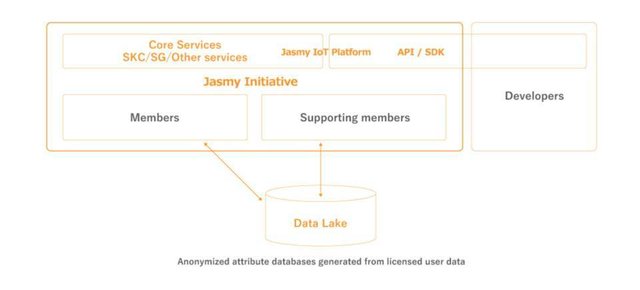 Example: Jasmy's IoT platform modularization
Example: Jasmy's IoT platform modularization
The connected devices of the Internet of Things project are also slightly different, which can be classified as follows.
- Self-developed (or fixed) equipment: Jasmy, IoTeX, Helium, MXC, Taraxa
- Extensive access equipment: Nodle, IOTA
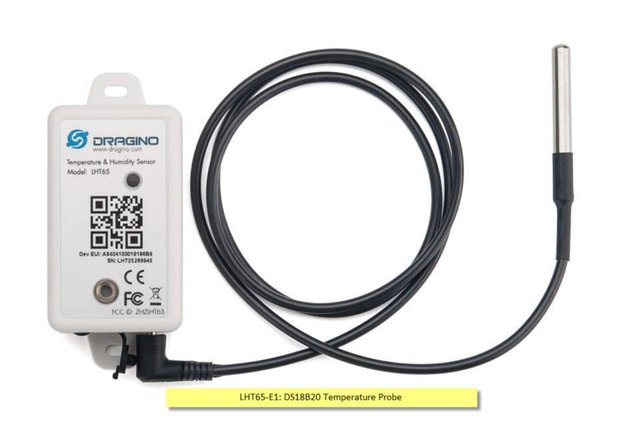 Example: Helium's quasi-access equipment
Example: Helium's quasi-access equipment
Or from the functional distinction, the following features can be found:
- Mainly solve data trust and ownership: IOTA, Jasmy, Taraxa, IoTeX
- Shared transmission: Helium, MXC, Nodle
In this field, the idea of self-developed devices is mainly to improve some features. For example, the self-developed hardware provided by Jasmy is mainly IoT communication modules and basic modules of wearable devices. These modules can integrate the functions required to build an IoT system. Will not cause too much burden, and provide access license for it, that is, it will not affect normal functions.
IoTeX is mainly to adapt to the application scenarios. Joint hardware companies have developed security cloud cameras and hardware devices with TEE modules added, which have trusted computing capabilities. For example, cloud cameras can be used as cloud cameras as well as network node devices. Data source equipment.
Since Helium, MXC, and Nodle are designed to solve problems in the communication industry, their access devices will also be standard communication modules that meet the standards of the communication industry, including routing communication modules, signal station communication modules, and wifi communication modules. Its technology uses the concept of low-power local area networks. For example, Nodle uses a low-latency, low-power network composed of mobile phone Bluetooth. Both Helium and MXC build low-power local area networks through communication signal stations or routing.
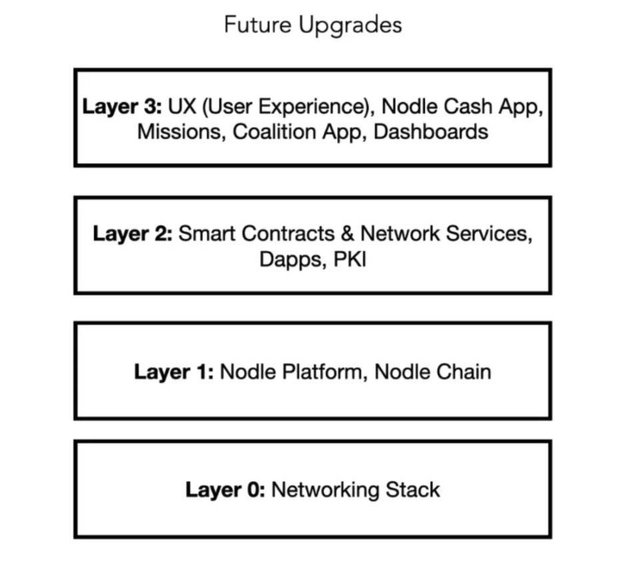 Picture example: Nodle's hierarchical structure, layer0 is the IoT device layer
Picture example: Nodle's hierarchical structure, layer0 is the IoT device layer
After the device is connected, the data obtained by the device is mainly managed through the protocol layer.
For example, Jasmy, IoTeX, Taraxa, and IOTA obtain data sources and carry out special encryption circulation, or transmit through secure protocols, which mainly solve the problem of data credibility and ownership. For example, Jasmy uses SKC, SG and other cryptographic technologies, while IoTeX TruStream, a secure transmission protocol. However, IOTA and Taraxa mainly use cryptographic algorithms for block packaging encryption.
For Helium, MXC, Nodle and other projects that mainly realize data transmission and sharing, it is to establish a lower-latency Internet of Things network under the background of Internet wireless transmission, using low-power local area network technology.
The user needs to share the low-power network provided by the connected IoT device to help data transmission. For example, Nodle shares the Bluetooth network of the mobile phone. Once other IOT devices access the Bluetooth network through the Nodle protocol, they will transmit data through the network. , The access person makes a profit through shared network transmission. Such low-power networks can replace communication networks, reduce costs, and utilize idle computing resources.
Helium and MXC have provided signal station equipment in certain areas of the city in advance, so that the low-power test network can exist stably, and the network can be directly used for commercial realization.
Disassemble the network structure of these projects in detail, you can see the feasibility of the network more clearly.
Split the structure of the cryptocurrency IoT project
First of all, all encrypted currency networks need a peer-to-peer communication layer. Each device is connected to establish an Internet of Things network, which can also be used as a peer-to-peer communication network for encrypted currencies.
One thing to mention here is that if the Internet of Things network is not cloud-based, that is, the computing power of the Internet of Things network cannot be used by the blockchain. The blockchain network does not run on this network, but is a separately established area. Block chain network to run the general ledger.
For example, Jasmy, the device connected to its IoT platform is a complete terminal, that is, a data source. Its blockchain network runs on the nodes of cooperative enterprises.
Let's take a look at what equipment is connected to the following items.
- IOTA: A wide range of devices that can run IOTA nodes
- Jasmy: wearable devices, notebooks, corporate PCs
- IoTeX: Directional TEE devices, smart cameras, etc.
- Nodle: mobile phone
- Helium: fixed communication equipment
- Taraxa: targeted safety equipment
- MXC: Fixed communication equipment
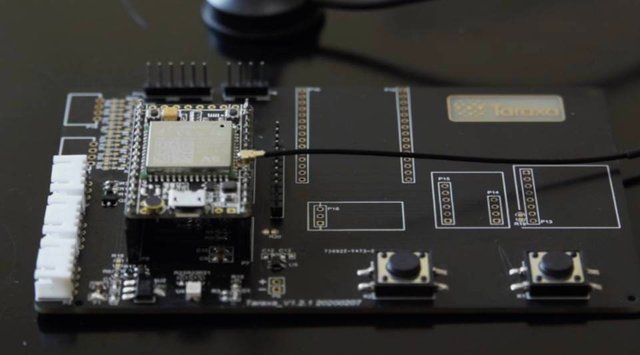 Example: Security device components connected by Taraxa
Example: Security device components connected by Taraxa
After hardware devices are connected, there will be two choices. One is to use the data generated by these devices to generate value through the blockchain protocol, and the other idea is to share the computing power of these devices.
This requires the protocol layer to complete the deployment. The following is the deployment method:
Jasmy: After the device is connected to the network, the data is encrypted and the account of the device is generated on the blockchain to attribute the data generated by the device to the owner. The data collected by mobile apps and PCs are recorded through DID, and then aggregated into a valuable data set.
IoTeX: After the device is connected, a separate data set of the device and everyone is formed through DID, or the data of the device is encrypted to achieve safe transmission, and the data can be used with confidence.
Helium: After the communication equipment is connected, it will become a part of the low-power network shared transmission, sharing the data transmission to get rewards.
Nodle: After the communication equipment is connected, it will become a part of the low-power network sharing transmission, and the transmission of data will be shared to obtain rewards.
Taraxa: After the data source device is connected, it is encrypted by cryptographic technology to form data on the chain, which is then available for circulation.
MXC: After the communication equipment is connected, it will become a part of the low-power network shared transmission, and the data transmission will be shared to obtain rewards.
IOTA: After the device is connected to the network, the data is stored on the data generation chain through tangle technology, and then flows.
Through these anatomy and statistics, we can infer. If it is a network that mainly solves data credibility and ownership through blockchain, its main goal will be to access more devices. Take Jasmy as an example. It has successfully accessed personal PCs, corporate PCs, wearable devices, and mobile phone App data. These data are processed through Jasmy's IoT platform and blockchain, and will continue to circulate with the rights and interests of the person who owns the data. Among them, Jasmy believes that only through the physical layer (chip encryption) and the distributed data management of the upper-layer blockchain can the data problem be solved, so special hardware modules will be used to solve the data problem.
There are also IoTex and Taraxa that also use chip-level encryption, which are data sources that require secure hardware to run.
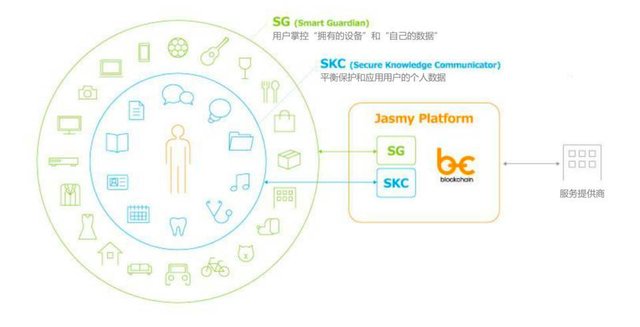 Example: Jasmy's SG and SKC processing example of data
Example: Jasmy's SG and SKC processing example of data
In addition, if we analyze in detail, a project with major data source issues like Jasmy must take the data trading market as the ultimate goal of the project. And by comparison, other projects that can solve such problems have different goals. For example, the IoTeX and Taraxa projects are positioned for trusted transmission, which is the process of secure transmission. Therefore, it is more suitable to add Oracle's in its scene applications. Application scenarios.
As for those projects that mainly address data transmission and sharing, the main goal is to participate and share more transmittable parties. Of course, it is also necessary to achieve data security and data attribution in a network that mainly completes the "transmission" function, such as MXC, In addition to transmission and sharing, Nodle and others will also have data transactions. If the platform is innovative enough, they can also become Oracles.
How to do application innovation in the cryptocurrency Internet of Things network?
Based on the technology of these platforms, we need to analyze the innovative possibilities of the application layer.
Application directions can be classified as ToC and ToB.
ToC Attempt
ToC is most closely related to ordinary users. One is that the data belongs to the user, and the other is that the user can use it conveniently. The division of data attribution is to return the data originally collected by the platform in the Internet era to the user who generated the data. Most projects that return data ownership to users will use DID to connect all data.
However, in the context of IoT devices, data has two ideas, one is divided by people and the other is divided by machines.
In all the projects, Jasmy described the division of ideas in a more detailed way. First, it uses SKC technology to establish DIDs for users, and then provides individuals with lockable storage cabinets ("Personal Data Cabinets") for storing personal data in a distributed storage system. .
In this way, individual users can not only store and manage important personal data in this storage cabinet, but also freely determine the scope and period of personal information provided when personal data is connected to the company.
This personal data cabinet is a distributed storage service based on the P2P network. Its main function is to save files in a distributed storage system through "content addressing", and the hash value of the file is recorded on the blockchain Above, bind with DID.
For devices connected to the Internet of Things, if the DI created by SKC is used to register the Internet of Things devices in the network through SG technology, this is the detailed division of device data.
Ultimately, after these data generate commercial value, the value will be returned to the owner.
The possibility of ToB
The Internet of Things is more likely to shape the business of ToB.
For some of the services implemented by Jasmy in the previous article, the beneficiaries of the services are the c-end users, but the business demanders must be the B-end. Therefore, the business shaping of the project is still ToB.
In addition to the transformation of data ownership, there are three greater opportunities. They are Oracle, Trusted Cloud Computing Platform, and CDN.
Oracle needs to be based on a trusted execution process, and its transmitted data can be trusted. Because the data passed by Oracle often has important values, such as prices, indices, weather, and so on. And Oracle is used very frequently, which will be a profitable business with long-term value. A wide range of data sources in the Internet of Things can be used as data sources, and the blockchain can also complete the communication between these machines.
For example, IoTex, Taraxa, and Nodle can all be used as Oracle.
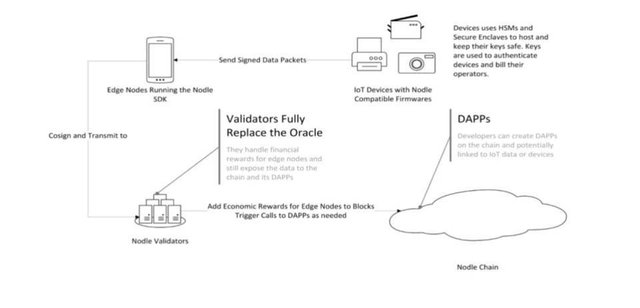 Example: Nodle's Oracle model
Example: Nodle's Oracle model
The establishment of a trusted cloud computing platform is mainly to share the computing resources of access devices. Some IoT devices have some idle resources, such as smart home terminals. After cloudification, they can use shared computing resources such as edge computing to seek revenue. This project is large in scale and complicated in design, but after a long-term service volume is formed, the benefits will be considerable.
It is possible for IOTA to form such a structure, but IOTA’s business is slightly limited, and it mainly provides targeted services to various vertical industries.
The last is the CDN network. This model refers to many devices that need to be updated and instant messaging in the local area network, such as the locks of shared bicycles, and the response of smart equipment terminals. Most communication processes require low-latency and instantaneousness.
Nodle, MXC, and Helium are actually designed directly for this demand. Such a business requires the participation of a large number of enterprises and institutions to generate demand.
Talk about the possibility of updating access equipment
The progress of the cryptocurrency Internet of Things project, in addition to the progress of cryptocurrency technology, the update of access to the Internet of Things devices also plays a significant role.
In IoT devices, the most important part is the chip. Because the chip is the main part of the calculation, it will provide the computing resources needed by the encrypted currency network and even the data source. As we mentioned earlier, IoTex has developed TEE chip modules through cooperation with hardware companies, and through TEE, data transmission can be protected or smart contracts can be executed.
In addition, there are two large-scale equipment updates, one is MXC and Helium to implement low-power LAN equipment. Because these devices are standard communication devices, their updates are the ones required by the communication standards and the communication industry.
The other type is commercialized smart device updates, these smart devices appear in the lives of users, such as
Based on the background of the Sony team, Jasmy will not be limited to PCs, smart phones, smart wearable devices, but also home routers, WiFi, smart car keys, smart door locks, and even human embedded smart chips.
We look forward to the equipment update, which has a lot to do with which terminal devices the chip will be installed in, because only the computing power of the chip can meet the requirements before the access device can be used. This imagination seems limitless.
Economic incentives that cannot be ignored in IoT projects
At the end of the article, we need to discuss a very important issue, the necessary design of cryptocurrency IoT projects: token incentives. The goal is to allow more devices to access the network to provide data, to allow more users to provide data to the network, and to allow more supporters to help build the Internet of Things network and blockchain network.
These token incentives will solve the supply part of demand and supply, and then supply will slowly generate demand. This is also a new mining model that cryptocurrency IoT projects can provide, connect to IoT devices, and share data to gain revenue , Or access equipment, share resources to gain revenue.
The income will be cashed in tokens or other forms. It is highly possible that tokens will be used as incentives and will eventually be converted into cash in the secondary market. The price of each token on the exchange will also become a factor for users to use the platform .
The 7 tokens in today’s article: IOTA, IoTeX, Jasmy, Helium, Taraxa, Nodle, MXC, among which IOTA is the longest online token and ranks 25th in market value, followed by IoTeX and MXC. Currently MXC has developed For some mining service providers, among these currencies, Jasmy and Helium are short-lived currencies. According to the official disclosure, Jasmy is likely to be the first local token to be launched after compliance with Japanese cryptocurrency exchanges. Taraxa and Nodle are currently not online.
The appreciation of the token listing is the biggest motivation in token incentives, and it will also be a good start for the ecological construction of a cryptocurrency Internet of Things project. This track is far from mature and saturated, and enough expectations can be given.